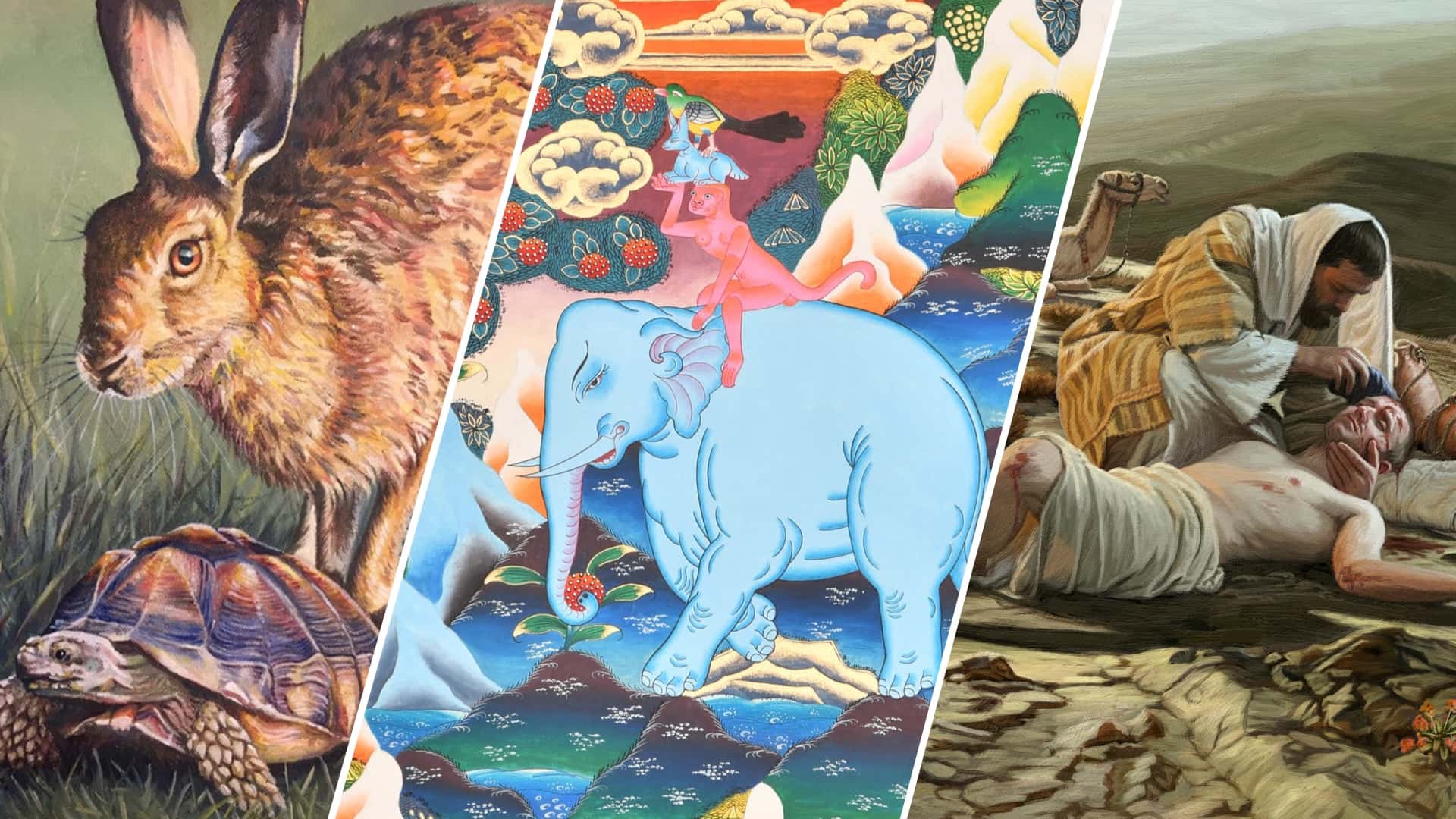You’ve likely encountered parables in religious texts, folktales, or even in everyday conversations, but have you ever stopped to wonder what is a parable and why it has remained such a powerful tool for teaching and conveying wisdom throughout history?
In this blog post, we’ll unravel the mystery behind parables, examine their unique characteristics, and discuss the timeless appeal that continues to captivate readers and listeners alike.
What is a Parable in Literature?
First, let’s define parable
Parables are useful because they effectively convey moral lessons and universal truths through relatable, engaging stories that resonate with people across cultures and generations. Let’s take a look at the parable definition.
PARABLE DEFINITION
What is a parable in literature?
A parable is a succinct and allegorical story, often featuring relatable characters or situations, that is designed to convey a moral, ethical, or spiritual lesson. Rooted in the Greek word 'parabole,' which means "comparison" or "analogy," parables typically employ metaphorical elements and symbolic language to illustrate a deeper truth or message.
In essence, this type of story is a powerful device that has been used for centuries to impart wisdom, provoke thought, and inspire personal growth. By employing familiar situations and symbolic language, parables can effectively communicate complex truths or lessons in a way that is both engaging and memorable.
Key Characteristics of Parables:
- Brevity
- Allegory
- Moral or Spiritual Lesson
- Universal Themes
What is a Parable Made From?
Key characteristics
As we delve deeper into understanding parables, it's essential to identify the key characteristics that set them apart from other forms of storytelling and literary devices. These distinctive features allow them to effectively convey profound lessons in a relatable and memorable manner.
Let’s explore the seven main attributes that define parables and contribute to their timeless appeal.
Brevity: Parables are usually short and concise, making them easy to remember and share with others.
Allegory: Parables often use allegory, where characters, objects, or events represent abstract concepts or ideas to convey a deeper meaning.
Allegory • Literature
Moral or Spiritual Lesson: The primary purpose of a parable is to teach a valuable lesson, usually related to morality, ethics, or spirituality.
Universal Themes: Parables often explore universal themes that resonate with people across different cultures, backgrounds, and beliefs.
5 Ways to Layer Theme into a Screenplay • Subscribe on YouTube
Simple Language: Parables are typically written or told in simple, everyday language, making them accessible and easily understood by a wide audience.
Symbolism: Parables frequently employ symbolism, using familiar objects or events to represent more profound concepts and ideas.
What is Symbolism?
Realistic Scenarios: Although parables may contain elements of fantasy or supernatural occurrences, they usually depict relatable and realistic scenarios that help the audience connect with the story.
Related PostS
Memorable Parable Examples in Literature
Differentiating parables
Like with many literary devices, parables are often confused with other kinds of figurative language. Let’s go through a few things that might be close to parables, but aren’t.
Parable vs Fable
Parables and fables have a lot in common. Both can be instructive short stories with clear morals. The difference lies in their characters.
A fable features anthropomorphic animals or inanimate objects. Think, for example, of the tortoise and the hare. A parable, meanwhile, is more rooted in reality, with human characters.

A fable, not a parable
Parable vs Metaphor
A metaphor is a figurative comparison, like “Sam was a monkey when it came to climbing.” Sam isn’t literally a monkey, but the comparison tells us that Sam is good at climbing.
A parable can be applied metaphorically. The small stories can be used to comment on a situation that may have no literal similarities. But a parable in and of itself is not a metaphor.
Allegory vs Parable
Allegories and parables probably have the most overlap of the terms we’ve discussed so far. An allegory is a story that is symbolic of a larger meaning.
As such, parables are allegories. But not all allegories are parables. An allegory can be a much longer story.
The entirety of Avatar is an allegory for imperialism and eco-fascism. But Avatar is too long and complex a story to be a parable.
Related Posts
Memorable Parable Examples in Literature
Famous parable examples
The Good Samaritan parable teaches the importance of compassion and kindness towards others, even those who may be considered our enemies or strangers, through the story of a Samaritan who selflessly helps an injured man on the roadside.
The Good Samaritan — (Christianity)
The Good Samaritan parable teaches the importance of compassion and kindness towards others, even those who may be considered our enemies or strangers, through the story of a Samaritan who selflessly helps an injured man on the roadside.
The Good Samaritan • Parable Examples
The Prodigal Son — (Christianity)
The Prodigal Son is a parable about forgiveness and redemption, telling the story of a young man who squanders his inheritance on a life of indulgence, only to return home destitute and remorseful, and is welcomed back by his loving father.
This tale emphasizes the importance of humility, repentance, and the unconditional love of a parent.
The Prodigal Son
The Parable of the Milkmaid follows a milkmaid who provides milk to a Brahmin priest by crossing a river every day.
She is often late due to the delayed boat service, and the priest admonishes her by saying that if she believed in God she’d be able to easily cross the river.
She takes his advice, and starts to arrive on time each day. The priest, however, is confused as to how she is now so prompt. She tells him she did as he told her, and she shows him how she can now walk across the river. The priest, meanwhile, is unable to follow her across the river.
The priest, although preaching the virtues of God, did not fully put his trust in Him. Thus, the moral is that people should completely resign themselves to God’s wishes.
By examining famous parables like The Good Samaritan, The Prodigal Son, and The Milkmaid, we can gain a deeper understanding of the values and principles that guide our lives. As we continue to share these timeless stories, we not only preserve their wisdom but also foster empathy, compassion, and a shared sense of humanity.
Related Posts
UP NEXT
What is an Allegory?
Now that we have explored the world of parables and their profound impact, it's time to delve into another powerful form of storytelling: allegories. Let's uncover the subtle differences and unique characteristics of allegories in our next article.
